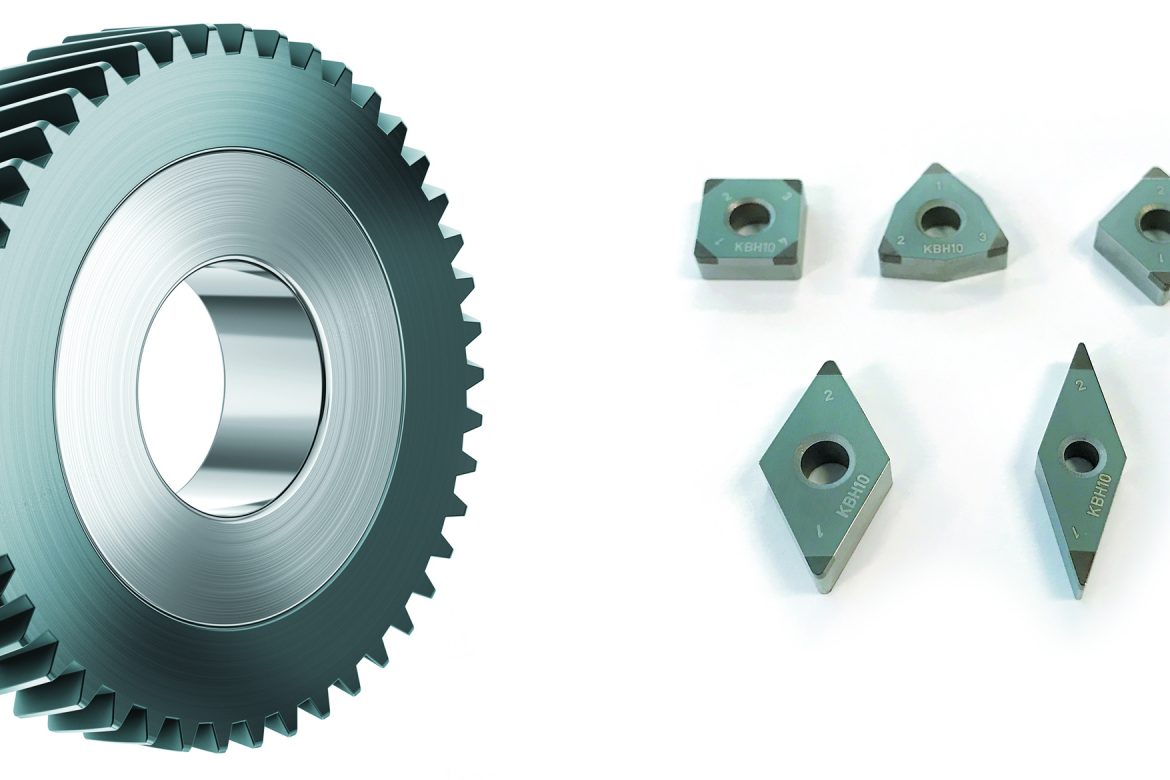KBH10: Mastering the challenges of hard turning
Kennametal Inc, which is a company engaged in materials science, tooling and wear-resistant solutions, has introduced KBH10. It is an uncoated PcBN turning insert that offers exceptional wear resistance and very low cutting forces. As a result, many customers are now enjoying double the tool life together with improved part quality.
Hard turning has been used for decades to streamline and in many cases eliminate cylindrical grinding operations. It’s fast, accurate, and thanks to tooling suppliers such as Kennametal, a broad assortment of predictable, cost-effective cutting tools is available to tame even the most difficult hardened steels, superalloys, and chilled irons. But as the aerospace, automotive, power generation, and other industries continue to develop even more robust metals, cutting tool manufacturers must evolve as well with high-performance tooling to tackle these materials.
Best of Breed
That’s exactly what Kennametal Inc. has accomplished recently with its introduction of KBH10, a new breed of polycrystalline cubic boron nitride (PcBN) hard turning insert designed specifically for the challenges of today’s demanding market place. Helmut Gremer, senior engineer for global machining technology, says that the new insert complements Kennametal’s existing PcBN grades KBH20 and KB5630 by providing the extreme wear resistance needed to successfully turn hardened metals up to 65Rc, especially where very fine surface finishes are required. “We’ve seen that many manufacturers are decreasing the allowable tolerances on bearing journals, rings and pistons, gear hubs, and so on,” he says. “For example, dimensional tolerances of < 4 µm or less are increasingly common, as are surface requirements better than Ra < 0,4 µm. This new grade closes the gap for these and other customers that need superior tool life when finishing such parts.”
In one example, a well-known automotive manufacturer was able to more than double tool life—from 150 pieces per edge to 350 pieces—during an internal facing operation on a 140 mm (5.5 in.) diameter 5115 alloy steel bearing hub that was previously heat-treated to 62 HRC. And a driveshaft producer achieved similar results, increasing tool life from 250 to 450 pieces per edge when turning 58 HRC UC1 (similar to S53) steel on its vertical turret lathes, consistently maintaining a 6 Rz surface finish while doing so.
Making the Hard Case
In each instance, cutting speeds of 180 m/min were used (590 sfm), with depths of cut averaging 0.15 mm (0.006 in.) and feedrates ranging from 0.22 to 0.32 mm per rev (0.0087 to 0.013 ipr). Also in each case, the customer saved thousands of dollars annually in insert costs compared to its existing solution, while substantially reducing downtime due to tool changeovers. The KBH10 substrate is completely new. Its PcBN composition is designed for up to 20-percent higher cutting speeds while providing equivalent or in some cases far greater tool life. Kennametal engineers were frequently able to achieve Ra 0.2 and Rz 1surface roughness, while consistently maintaining the profile and dimensional tolerances noted earlier. And because KBH10 is available in several different geometries and edge preparations, it’s quickly becoming the go-to insert for a wide cross section of manufacturers and their turning applications.
www.kennametal.com


